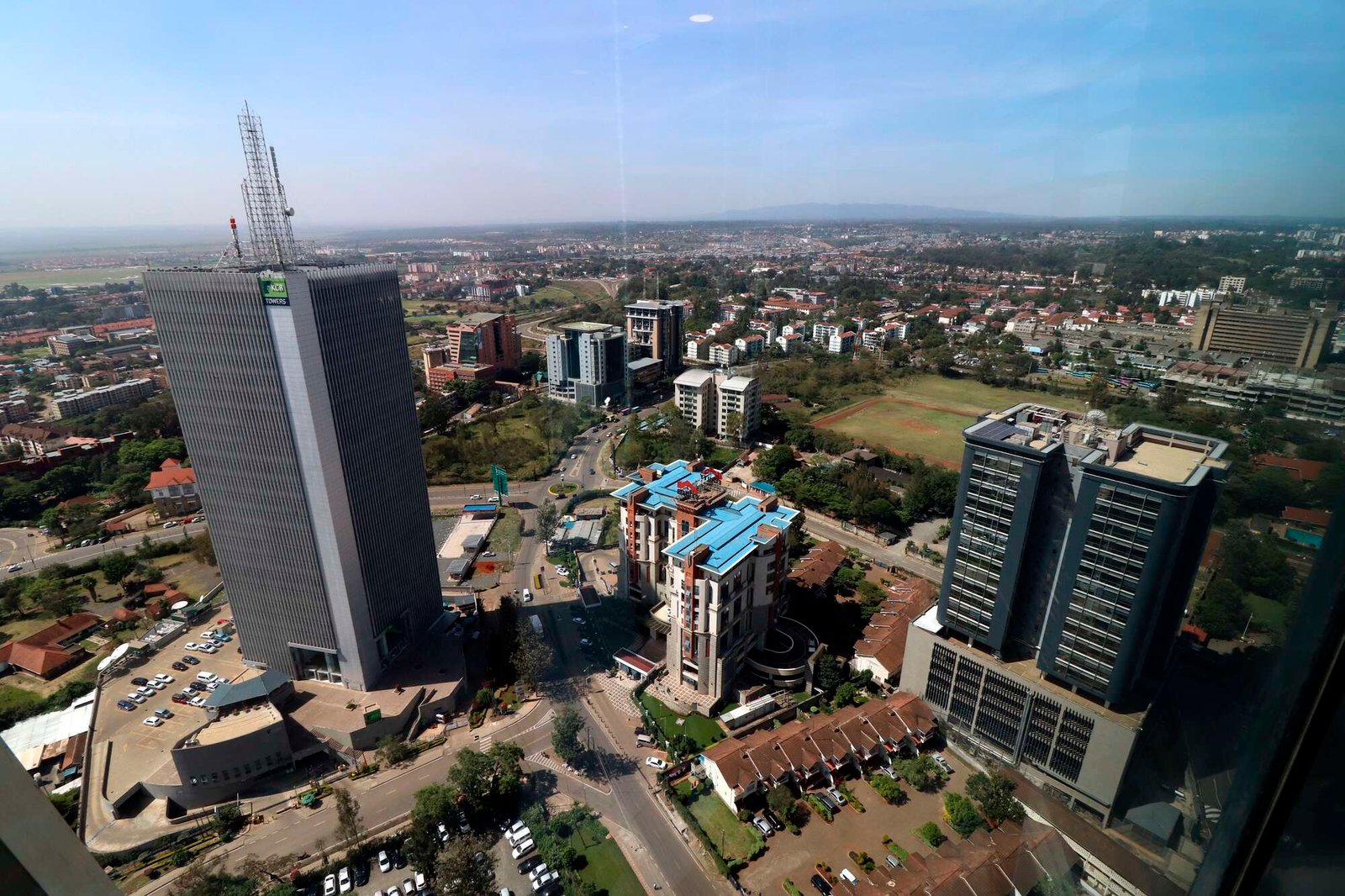[ad_1]
Economy
Land depreciation hits seven Nairobi premier suburbs
Friday January 13 2023
An aerial view of KCB headquarters, Equity Centre and World Bank Kenya offices in Upperhill. PHOTO | DIANA NGILA | NMG
For decades, investing in land in Kenya’s capital, Nairobi was a sure bet and a safe haven in a market where prices doubled every two years driven by speculation, a bulging middle class and a club of high-net-worth earners chasing after assured returns at low-risk.
But a Business Daily analysis of data covering the past five years challenges this trend, showing that at least seven of the high-end suburbs in Nairobi have lost value by up to 11 percent between 2018 and 2022, reflecting the stagnating demand for Grade A office space and high-end residential apartments as a result of oversupply.
Historical land prices data provided by realtor HassConsult shows that land prices in Upper Hill, Kilimani, Parklands, Lavington and Gigiri declined by 11 percent, five percent, four percent and three percent respectively between 2018 and 2022.
This means that an acre of land in these suburbs is cheaper today than it was five years ago, leaving investors who wanted to sell today scratching their heads, in a major market upset seen by some analysts as a ‘price correction’.
Hass Consult says that Upper Hill was experiencing an oversupply of commercial office space that had seen developers adopt a “wait-and-see” attitude before committing capital to new projects, while housing developers in the suburbs are waiting for inventory to get sold and vacancy levels to improve before rolling out new units.
The real estate sector was negatively hit by the Covid-19 pandemic in 2020 and 2021, where work-from-home plans reduced demand for office space in the city.
READ: Land prices soar 20pc on Nairobi Expressway lift
The fall in consumer spending power and caution over investing due to job losses and business closures also affected demand for new houses, leaving developers unable to put up new units.
Upper Hill has the highest land prices in Nairobi averaging Sh492 million per acre, followed by Westlands at Sh448.1 million and Kilimani at Sh403 million.
Five years ago, at the height of demand for new top-grade office space and high-end apartments, an acre in Upper Hill was selling at Sh558.3 million, while Westlands and Kilimani fetched Sh411.3 million and Sh426 million respectively.
The same size of land in Gigiri and Parklands went for Sh232.1 million and Sh397.5 million respectively last year from Sh241.3 million and Sh417 million five years ago.
“Kilimani and Upperhill have experienced supply saturation and because of that the market is now correcting itself as demand goes down in those localities…these places are fully developed and people had overpriced their land over time, so the market is correcting and with time the prices will tend to go down significantly,” said Stephen Katei, the CEO of Regent Management.
“Shocks and disruptions like the Covid-19 pandemic are also market correctors in the real estate sector.”
On the other hand, land in suburbs like Muthaiga and Spring Valley that have retained their old zoning rules appreciated by 44 percent and 35 percent respectively over the period.
A one-acre parcel in Muthaiga was selling at Sh207 million last year, from Sh146.1 million in 2018, while in Spring Valley an acre sold for Sh215.2 million, up from Sh159.4 million.
Land in Karen was selling at Sh59.8 million an acre in 2018, growing to Sh65.3 million last year.
“People who want seclusion go to places like Muthaiga because they have not allowed encroachment from apartments…you, therefore, find the rich having a reference for Muthaiga or Karen,” said George Wachiuri, the chief executive officer at real estate firm, Optiven.
Muthaiga has also retained its value due to strict architectural guidelines rigorously enforced by the residents association and is also helped by being home to prominent Kenyans and ambassadorial homes that demand heightened security arrangements.
READ: Nairobi landowners set to pay double rates January
While land price growth in Nairobi’s suburbs has been a mixed bag, satellite towns have generally recorded a high appreciation due to ever-growing demand from middle-class Kenyans looking to build their own homes at affordable rates.
Five years ago, an acre in Juja was selling at Sh13 million but had appreciated by 44 percent last year to Sh18.8 million.
Juja has benefited from road infrastructure and investors getting drawn to develop housing and affiliated property for higher education centres located in the area, according to HassConsult.
Kiserian, Syokimau and Kitengela grew by 40 percent, 35 percent and 32 percent respectively in five years, with Limuru the only outlier with a price decline of four percent due to less developed access and utility infrastructure compared to the other satellite towns.
“The satellite towns have enjoyed much-improved infrastructure such as Thika Road, Ngong Road and the Nairobi Expressway that has opened these places and made them accessible to developers and home buyers,” said Collins Chacha, a developer at Homes Universal.
→ [email protected]
[ad_2]
Source link



